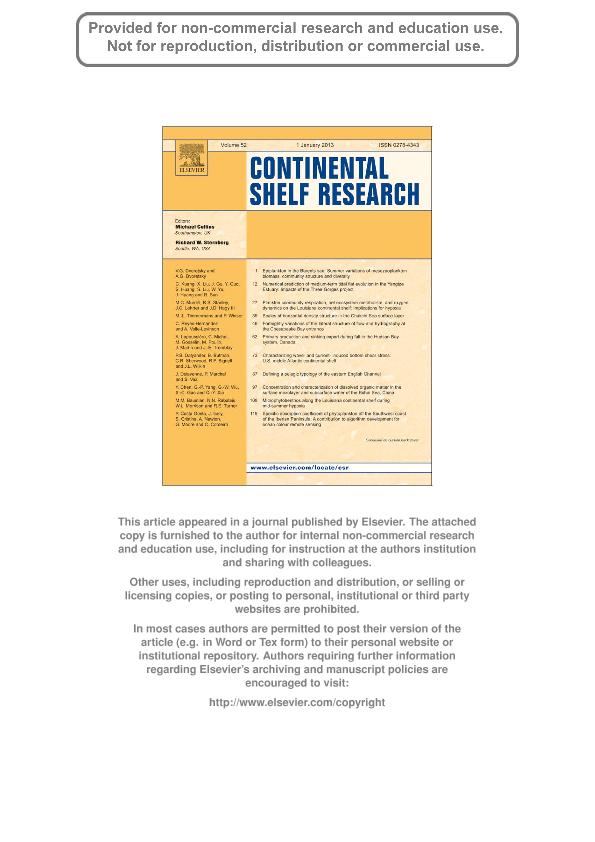Artículo
Phytoplankton summer bloom dynamics in the Bahía Blanca Estuary in relation to changing environmental conditions
Guinder, Valeria Ana ; Popovich, Cecilia Angelines
; Popovich, Cecilia Angelines ; Molinero, Juan Carlos; Marcovecchio, Jorge Eduardo
; Molinero, Juan Carlos; Marcovecchio, Jorge Eduardo
 ; Popovich, Cecilia Angelines
; Popovich, Cecilia Angelines ; Molinero, Juan Carlos; Marcovecchio, Jorge Eduardo
; Molinero, Juan Carlos; Marcovecchio, Jorge Eduardo
Fecha de publicación:
01/2013
Editorial:
Elsevier
Revista:
Continental Shelf Research
ISSN:
0278-4343
Idioma:
Inglés
Tipo de recurso:
Artículo publicado
Clasificación temática:
Resumen
We examined austral summer phytoplankton data (December-March) that cover the years 1978-2008 and compared with physico-chemical and meteorological variations in the Bahía Blanca Estuary, Argentina. During the years 1978-1982, 1992-1993 and 2006-2008, counts of phytoplankton abundance showed an increase in recent summers; from a mean value of 12 x 103 cells L-1 in 1978 to 2239 x 103 cells L-1 in 2008, while the chlorophyll concentration remained relatively constant (8.5 ± 2.5 μg L-1, CV = 27 %) over the continuous time series (1978-2008). The rise in the ratio "cell abundance:chlorophyll concentration" was linked to modifications in species composition, from dominance of phytoflagellates (10-20 μm) and relatively large diatoms (e.g. Cyclotella striata, 25-38 μm, Paralia sulcata 15-70 μm, Cerataulina pelagica 18-30 μm, Thalassiosra hendeyi, 27-52 μm) towards the dominance of the small (5-15 μm) centric diatom Thalassiosira minima, which reached > 80 % of the total phytoplankton abundance in summers 2006-2008. The Bahía Blanca Estuary has undergone climate modifications and increasing anthropogenic disturbances during the last three decades. In the early 1990s, regional climatic conditions revealed a significant shift. Additionally, dredging activities were initiated to allow the traffic of large ships, rising the levels of suspended sediments, and the invasive copepod Eurytemora americana was introduced via ballast waters into the estuary and has displaced the dominance of the native copepod Acartia tonsa towards summer periods. The examination of physico-chemical conditions of the estuary showed a trend to increase in the minima of water temperature and higher water turbidity, dissolved phosphate, nitrite and nitrate concentrations in the pelagic environment in recent summers. We discuss the potential effects of these changes and trophic interactions on the structure and composition of the phytoplankton summer blooms in this temperate and eutrophic estuary in the Southwestern Atlantic.
Archivos asociados
Licencia
Identificadores
Colecciones
Articulos(IADO)
Articulos de INST.ARG.DE OCEANOGRAFIA (I)
Articulos de INST.ARG.DE OCEANOGRAFIA (I)
Citación
Guinder, Valeria Ana; Popovich, Cecilia Angelines; Molinero, Juan Carlos; Marcovecchio, Jorge Eduardo; Phytoplankton summer bloom dynamics in the Bahía Blanca Estuary in relation to changing environmental conditions; Elsevier; Continental Shelf Research; 52; 1-2013; 150-158
Compartir
Altmétricas



